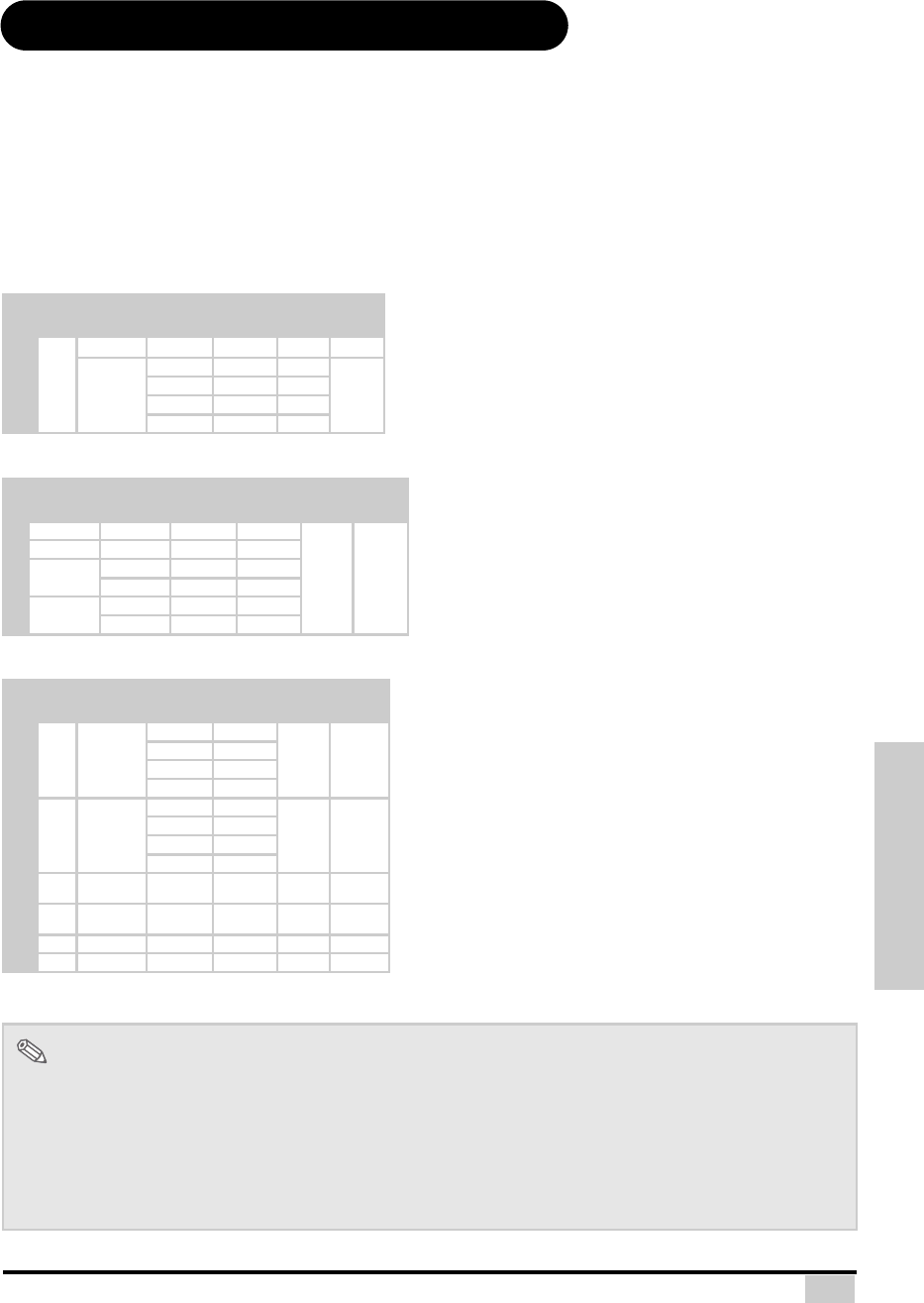
A
ppendix
39
Computer Compatibility Chart
Computer
• Multiple signal support
Horizontal Frequency: 25–75 kHz, Vertical Frequency: 50–85 Hz, Pixel Clock: 25–108 MHz
• Compatible with sync on green and composite sync signals
• XGA compatible with advanced intelligent compression
The following is a list of modes that conform to VESA. However, this projector supports
other signals that are not VESA standards.
PC/
MAC/
WS
Resolution
Horizontal
Frequency
(kHz)
Vertical
Frequency
(kHz)
VESA
Standard
DVI
Support
PC VGA
640 x 350 31.5 70
640 x 480
31.5 60
3
37.9 72 3
37.5 75 3
43.3 85 3
Resolution
Horizontal
Frequency
(kHz)
Vertical
Frequency
(kHz)
VESA
Standard
DVI
Support
Display
DVI
720 × 480 31.5 60
3 Upscale
720 × 576 31.3 50
1280 × 720
45 60
37.5 50
1980 × 1080i
33.8 60
28.1 50
PC/
MAC/
WS
Resolution
Horizontal
Frequency
(kHz)
Vertical
Frequency
(kHz)
VESA
Standard
DVI
Support
PC
SVGA 800 x 600
35.1 56
33
37.9 60
48.1 72
46.9 75
XGA 1024 x 768
48.4 60
33
56.5 70
60.0 75
68.7 85
MAC
13”
VGA 640 x 480 34.9 67
MAC
16”
SVGA 832 x 624 49.6 75
MAC
19”
XGA 1024 x 768 48.4 60 3
SXGA 1280 x 1024 64 60 33
Notes
•
This projector may not be able to display images from notebook computers in simultaneous (CRT/LCD)
mode. Should this occur, turn off the LCD display on the notebook computer and output the display data
in “CRT only” mode. Details on how to change display modes can be found in your notebook computer’s
operation manual.
• When this projector receives 640 × 350 VESA format VGA signals, “640 × 400” appears on the screen.
• When projecting video images of an interlaced video signal, the intended image may not be projected
when using the RBG input. In such cases, use the component input, S-video input or video input.


















